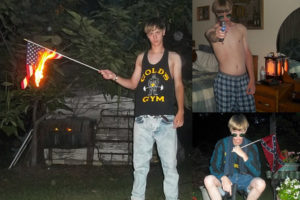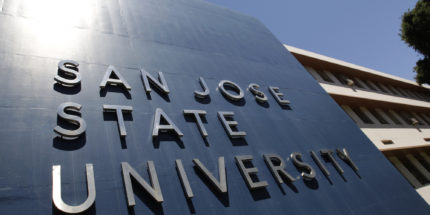In Lafayette, La., a 59-year-old white man opened fire in a multiplex movie theater with 100 people, killing three people, including himself. Nine others were wounded. The Guardian reports that the gunman was a lone white male, and the victims’ ages range from the late teens to the 60s. The man was a “drifter” named John Russel Houser, according to NBC News.
This latest mass killing by a white male—part of the epidemic of the lone gunman murdering strangers, people with whom he has no connection—is part of a problem that white America has failed to address. When so-called “Black-on-Black” crime is discussed by society and in the media, often there is an analysis of the Black family, poverty, education, mass incarceration, perhaps some issues of morality are even mentioned. However, there is no similar discussion or analysis on white criminality. When will the nation grapple with this issue, in which white people clearly are the problem?
Mass shootings are typically a uniquely American crisis—and they’ve increased in frequency. The fact remains that the vast majority of mass shooters in America are white men.
A Mother Jones study found that since 1982, there have been at least 70 mass shootings in the U.S., of which 44—or 63 percent—were white men. The average age was 35, and a majority were mentally troubled, with many showing signs before committing their crimes.
As Josiah M. Hesse reported for VICE, white men are the most privileged segment of society, and they are committing these mass shootings. Hesse noted that “since the Columbine school shooting in 1999, there has been a remarkable consistency—if not uniformity—in the age, gender, and race of the people who carry out these egregious crimes.”
He cited a 2013 University of Washington study of the disproportionately high number of massacres committed by white American men, which “found a correlation between feelings of entitlement among white males and homicidal revenge against a specific demographic.”
“Among many mass killers, the triple privileges of white heterosexual masculinity which make subsequent life course losses more unexpected and thus more painfully shameful ultimately buckle under the failures of downward mobility and result in a final cumulative act of violence to stave off subordinated masculinity,” wrote the authors of the study.
Certainly, we can point to shooters such as Dylann Roof, with his love for the Confederacy and apartheid South Africa, who targeted Black people because they were in his opinion, raping white women and taking over the country.
Tiffany Xie of Political Research Associates has connected the dots between white male privilege and violence. Xie, who found that over the last three decades, 90 percent of high school or elementary school shootings were perpetrated by white, often upper-middle class men, has zeroed in on the young-white-male phenomenon of “suicide-by-mass-murder.” This concept reflects white male privilege, of white men as the alphas, who are entitled to everything, including all the power, the educational opportunities, the jobs, the women, and the like, and will say, “If I’m going to die, then so is everybody else.”
Hesse suggests that chalking up these mass shootings to mental illness tends to stigmatize mental illness, and changes the subject away from the responsibility of white privilege.
Arthur Chu at Salon maintains that the talk of mental illness and white men is a cop-out, designed to treat these crimes as exceptions, to avoid discussions about societal illness, and “distract from the fact that the worst crimes in history were committed by people just doing their jobs–cops enforcing the law, soldiers following orders, bureaucrats signing paperwork.”
Chu noted that throughout history, “sanity” has been defined as “going along to get along” and aiding and abetting horrific evil.
“And hundreds of years of history in which an entire country’s economy was set up around chaining up millions of Black people, forcing them to work and shooting them if they get out of line? That’s just history,” Chu added.
Writing for Gawker, David J. Leonard focused on young white men such as the Newtown, Conn. and Aurora, Colo. shooters and how whiteness has been rendered invisible with every subsequent killing. Often, the shooters are described in a “sympathetic and identifiable” manner, as a bright, quiet kid who must have snapped. Further, as if in a case of innocence lost, white suburbanites proclaim that such crimes were not supposed to occur in their gated communities, only in the inner cities, which whites fled to get away from Blacks and Latinos in the first place.
“Because these are told as stories of individuals with specific reasons for killing others, there is no reason to talk about race, class, or gender,” Leonard concludes. “There is no reason to talk about society, nor is there any reason to think that Aurora, Newtown, or Columbine are becoming Chicago or Detroit.”
In a country where white men are perceived as losing out in America, they are recast as the victims. Writing in the New York Times in 2012 following the Newtown shooting, Christie Wampole argued that “maleness and whiteness are commodities in decline,” as if to blame these shootings on society’s struggle against white male domination, and call for a return to white entitlement.
Finally, in a March 29, 2013 opinion piece in the Washington Post, Charlotte and Harriet Childress note that if Black men and boys were committing mass shootings, there would be public debates on how Blacks must be held accountable and address the problem in their own culture and communities. Yet, the authors note, “when the criminals and leaders are white men, race and gender become the elephant in the room.” White men, they argue, are not used to being singled out, and will protest this as unfair. So white men, who control the U.S., shift the discussion to mental health issues, as if these shootings are due to a national mental health problem. Meanwhile, women and people of color with mental health issues are not shooting schoolchildren and complete strangers with semiautomatic weapons.
We are taught to believe that white men represent the whole country, that American history is the history of white men.
“This societal and cultural programming makes it easy for conservative, white-male-led groups to convince the nation that an organization led by white men, such as the NRA or the tea party movement, can represent the interests of the entire nation when, in fact, they predominately represent only their own experiences and perspectives,” the writers add.
The authors of the Washington Post commentary ask a number of questions that society must answer. For example, why are white males the source of mass shootings? Why do white men manufacture and sell guns for profit, and seek unrestricted access to guns? And why are white male lawmakers leading the charge to prevent finding any solutions?
If we do not address the problem of white male criminality, the crisis of white male mass shooters will continue.




